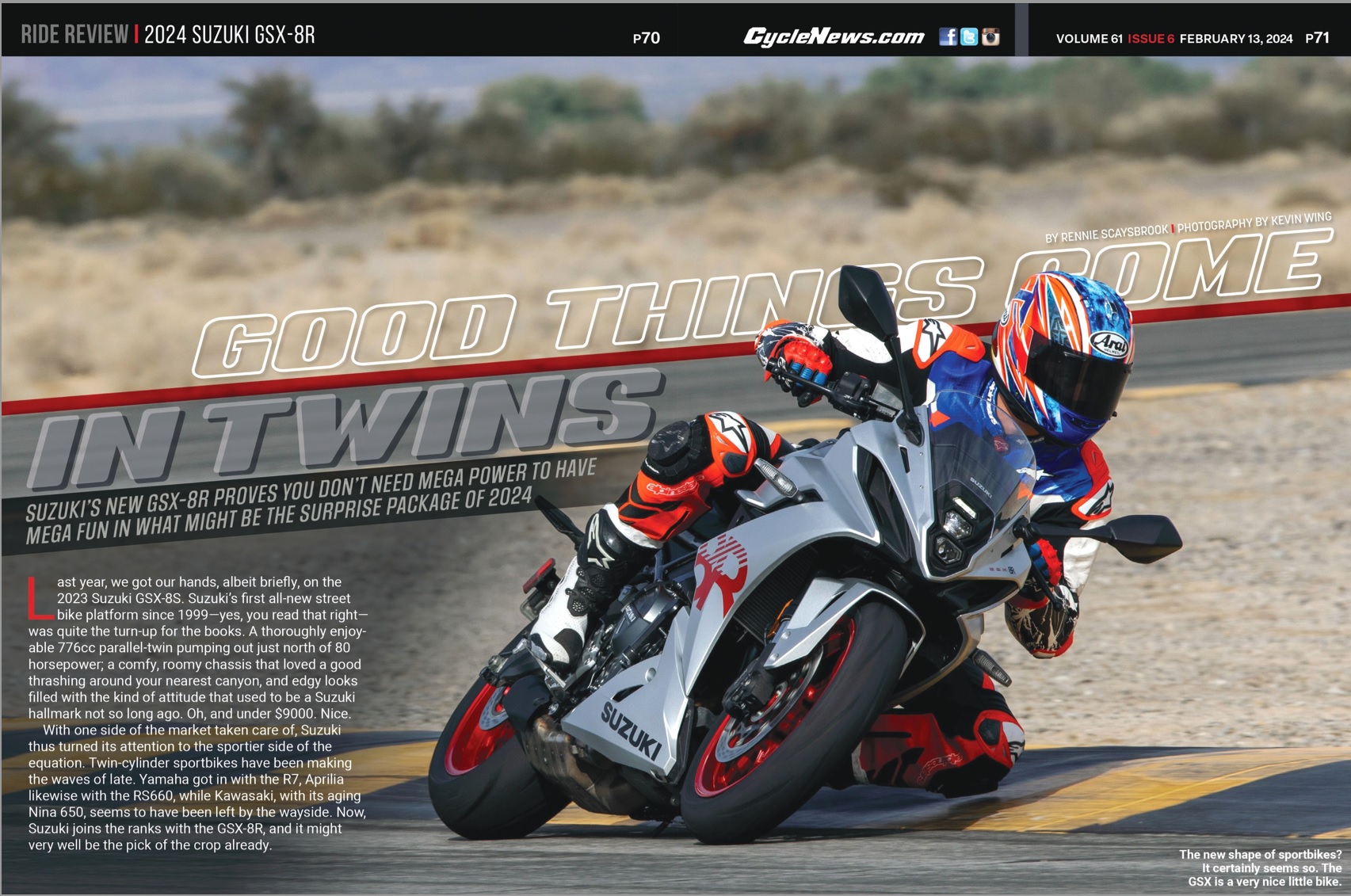Rennie Scaysbrook | February 19, 2024
Last year, we got our hands, albeit briefly, on the 2023 Suzuki GSX-8S. Suzuki’s first all-new street bike platform since 1999—yes, you read that right—was quite the turn-up for the books. A thoroughly enjoyable 776cc parallel-twin pumping out just north of 80 horsepower; a comfy, roomy chassis that loved a good thrashing around your nearest canyon, and edgy looks filled with the kind of attitude that used to be a Suzuki hallmark not so long ago. Oh, and under $9000. Nice.
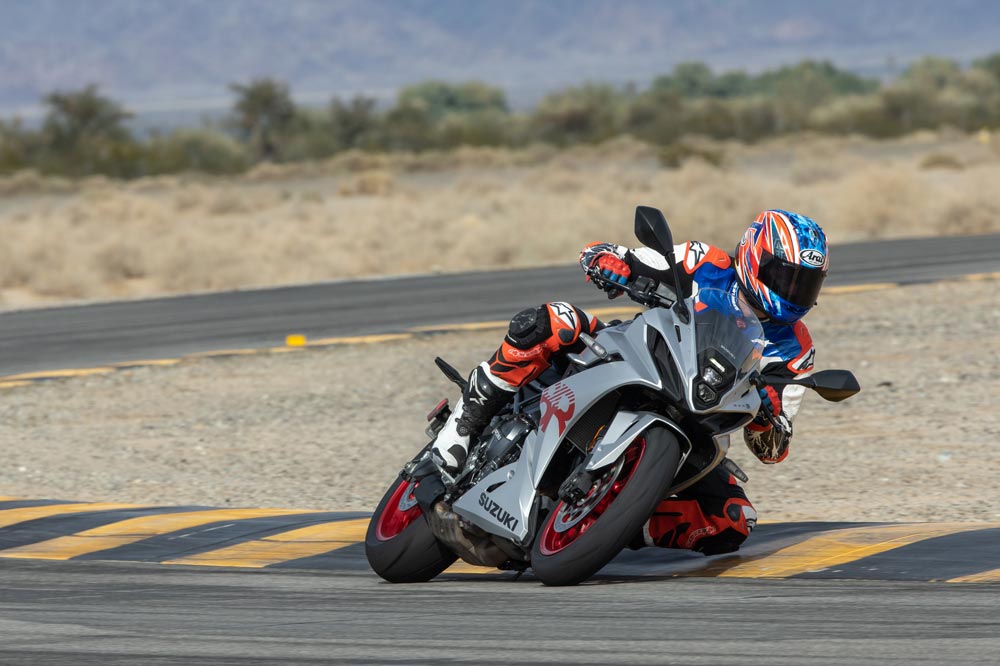 The new shape of sportbikes? It certainly seems so. The GSX is a very nice little bike.
The new shape of sportbikes? It certainly seems so. The GSX is a very nice little bike.
With one side of the market taken care of, Suzuki thus turned its attention to the sportier side of the equation. Twin-cylinder sportbikes have been making the waves of late. Yamaha got in with the R7, Aprilia likewise with the RS660, while Kawasaki, with its aging Nina 650, seems to have been left by the wayside. Now, Suzuki joins the ranks with the GSX-8R, and it might very well be the pick of the crop already.
Suzuki’s been in a couple of years process of waking up from a long, long slumber, and the GSX-8R is the latest in a slew of machines to come from Hamamatsu that have reminded the collective motorcycling conscious just what they are capable of.
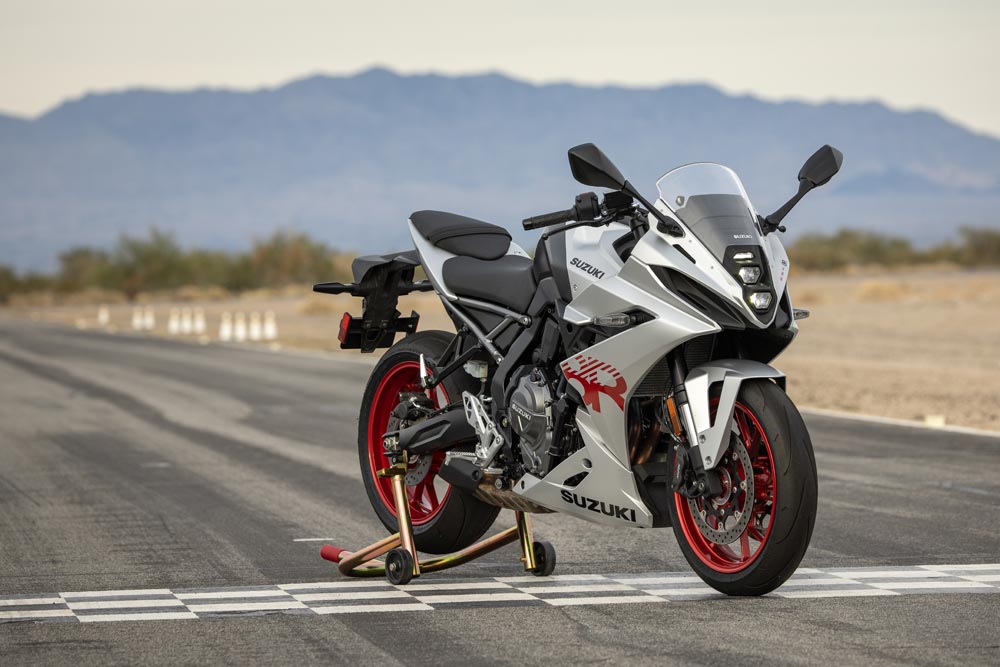 Like a Katana and a GSX-R had a fling.
Like a Katana and a GSX-R had a fling.
But in the time Suzuki has been largely absent from the sporty street bike scene, it’s changed quite dramatically. The days of low-barred sportbikes are seemingly numbered, and this twin-cylinder/junior class has almost gone back to a mid-1980s design style, one where the rider can have a fairing and screen and look all racy but not be perched in the lap record stance with the wrists low and ass high.
At its core, the GSX-8R is essentially an 8S with a new and very angular fairing. It looks like a cross between a GSX-R and a Katana.
But there have been a few significant changes to make the 8R what it is. The first and most obvious is the frame-mounted front cowling, which makes for a less tiring ride compared to the full naked 8S. Suzuki has really hit a sweet spot on their screen/fairing designs of late, as we found a similar trait on the GSX-S1000GT+ sport tourer when we tested it recently. Suzuki has shied away from making the screen too angular, thus allowing most of the wind to hit the rider’s chest and not their helmets, thus making a more comfortable ride.
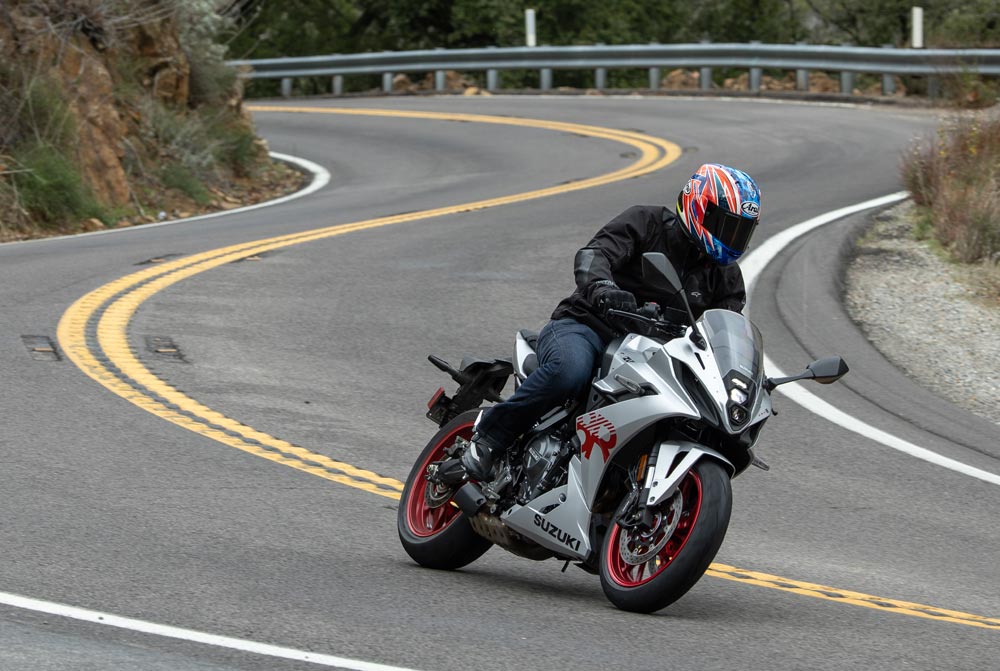 The near upright riding position is a perfect mix of naked and sport.
The near upright riding position is a perfect mix of naked and sport.
The handlebars are now mounted on the top of the top triple-clamp and are a two-piece forged aluminum design, which angles the rider a little forward from vertical and gives a near-perfect posture for sedate sport riding or general commuting.
The headlight design has changed slightly, giving it a more aggressive look, and the mirrors are now mounted on the fairing rather than on the sides of the handlebar.
One of the big changes between the 8S and the 8R is the significant difference in piston size for the Showa SFF-BP fork on the 8R to the KYB fork on the 8S. The 8R gains a 17mm larger piston at 37mm, which makes for a much nicer fork action on the road as well as the track. The fork is non-adjustable with only preload available on the rear shock, which will doubtless cause a few ranting forum posts over the coming months, but the Suzuki engineers, in conjunction with Showa, have created a fantastic front end that is at home being thrashed around the racetrack or being used to ride to the shops.
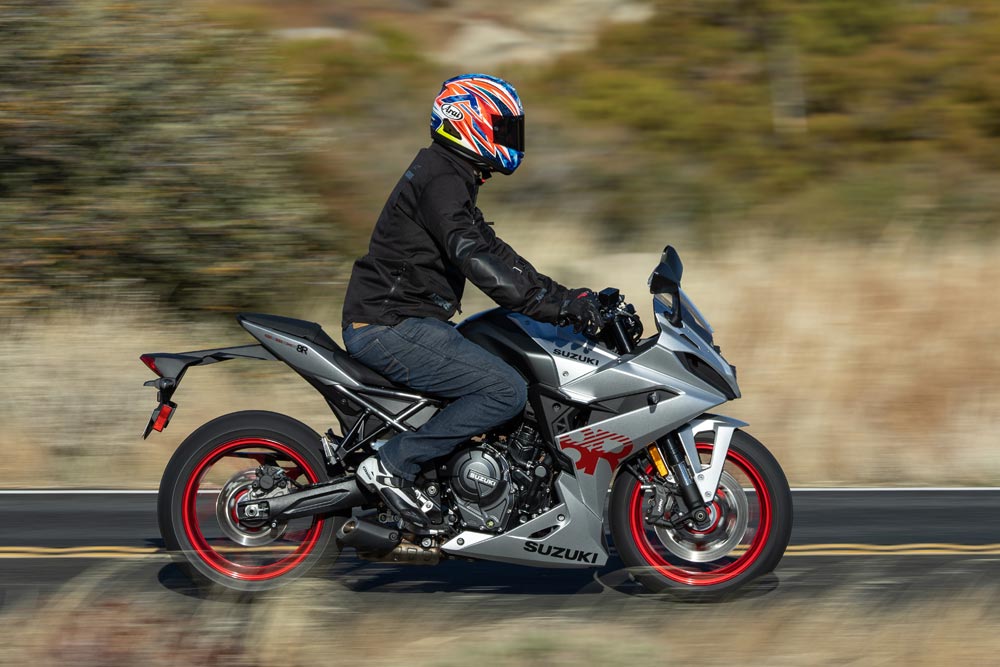 The cockpit is a little cramped for riders over six-feet tall.
The cockpit is a little cramped for riders over six-feet tall.
The 8R turns with a flow to it other bikes would kill for, and it’s complemented by plenty of feel at the handlebars. The 8R isn’t exactly a flyweight—it’s a claimed 36 pounds heavier than the R7 with a tank of gas—a not-insignificant number—but the chassis is extremely stable and will still turn into quick direction changes without much protest. A little extra ground clearance wouldn’t go astray, as I wore through a pair of AStars race boots in two sessions at Chuckwalla despite wedging my feet against the frame as best as I could.
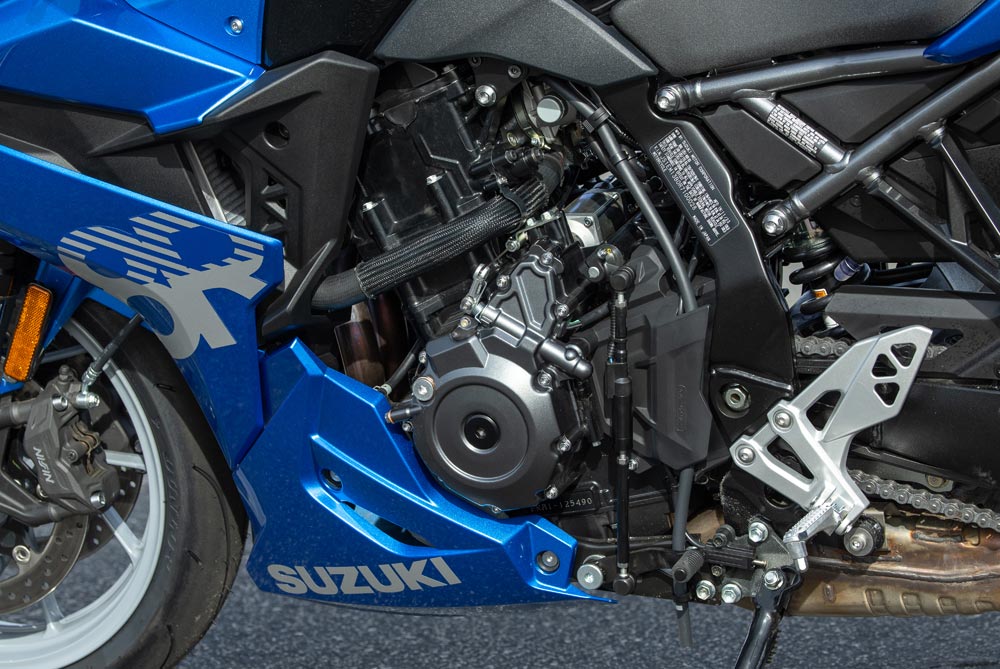 Suzuki has created a gem with the new 776cc twin. So much usable torque makes this an excellent street bike engine.
Suzuki has created a gem with the new 776cc twin. So much usable torque makes this an excellent street bike engine.
Unfortunately, the feel isn’t quite there when you go for the front brakes, thanks to a pretty cheap master cylinder. There’s plenty of braking power at the lever, but the modulation isn’t as nice as what I’d hoped for. It’s an easy fix, but one I feel shouldn’t be an issue for a sporty bike such as this.
Without doubt, the star of the show is the 270° 776cc parallel-twin motor. Suzuki’s done a magnificent job with this powerplant, creating one that has more than enough torque in the lower rev ranges for street riding/commuting but also one that will charge along happily in the higher revs.
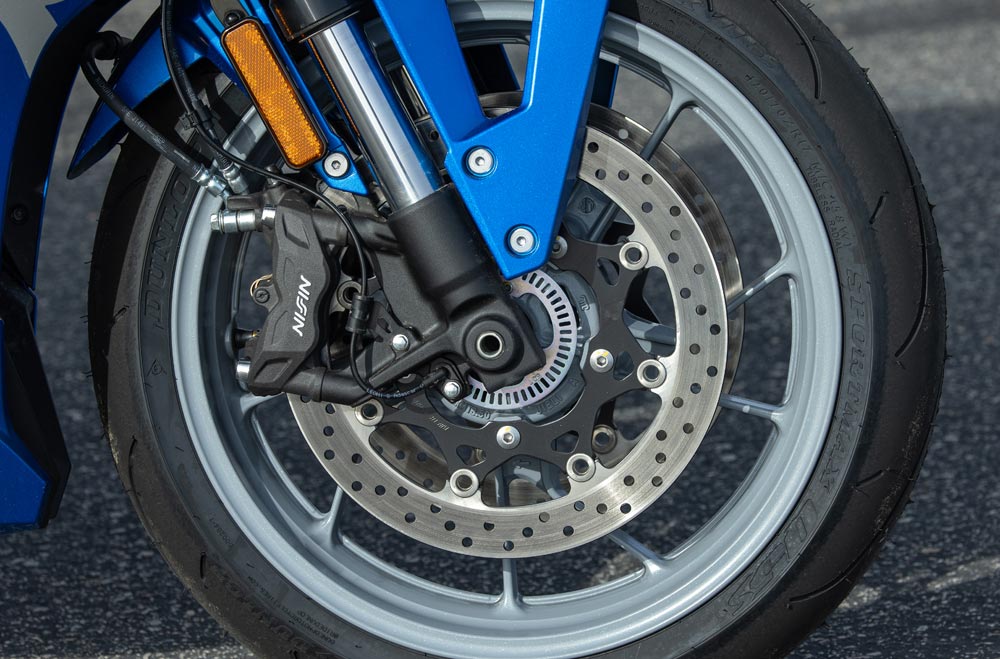 Four-piston Nissin calipers offer plenty of power, but feel is lacking at the master cylinder.
Four-piston Nissin calipers offer plenty of power, but feel is lacking at the master cylinder.
The motor runs two counterbalancers, so it’s creamy smooth in its power delivery. There are three riding modes—A, B and C—in the Suzuki Drive Mode Select system, but delivery is so nice you’ll likely not need anything other than A mode.
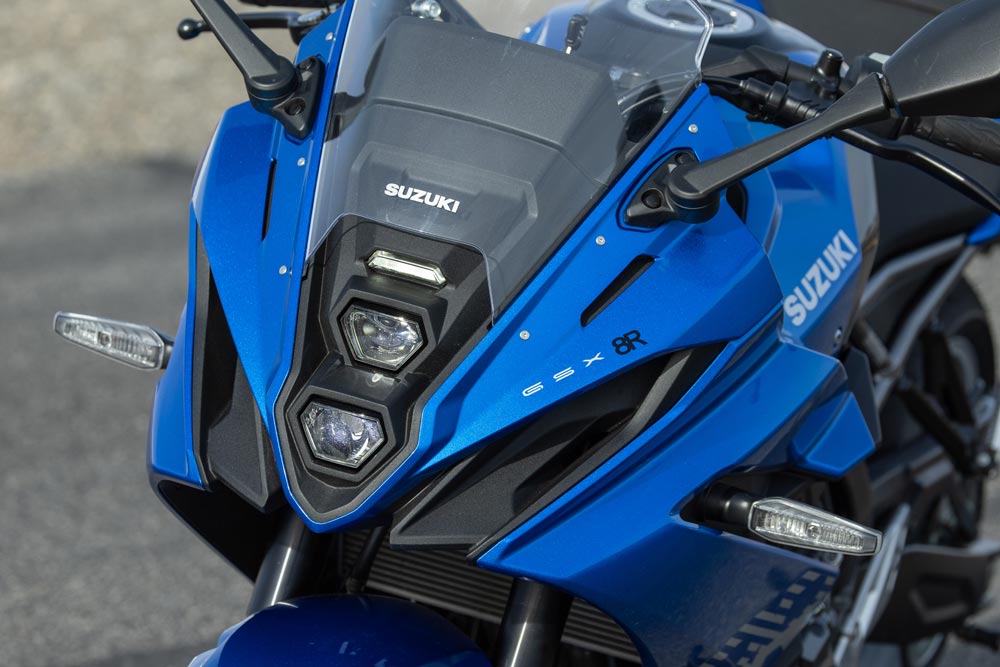 The stacked headlight design is certainly unique and gives the GSX a bit of an edgy look.
The stacked headlight design is certainly unique and gives the GSX a bit of an edgy look.
There are also three stages plus “off” on the traction control. During our road ride, I never saw the light flicker, and at Chuckwalla, with Dunlop’s Q5 tire, the TC light would only flicker on if you got nasty with the throttle. That shows just how well-planted that chassis is and how smoothly the power is delivered to the tire via the ride-by-wire throttle. Suzuki’s long been known for great gearboxes, and the 8R is no exception, especially when matched to the lovely up-and-down quickshifter. It’s a smooth, easy shift, so much so that it makes you wonder how so many other manufacturers can mess theirs up to such a degree. The Suzuki quickshifter just works—plain and simple.
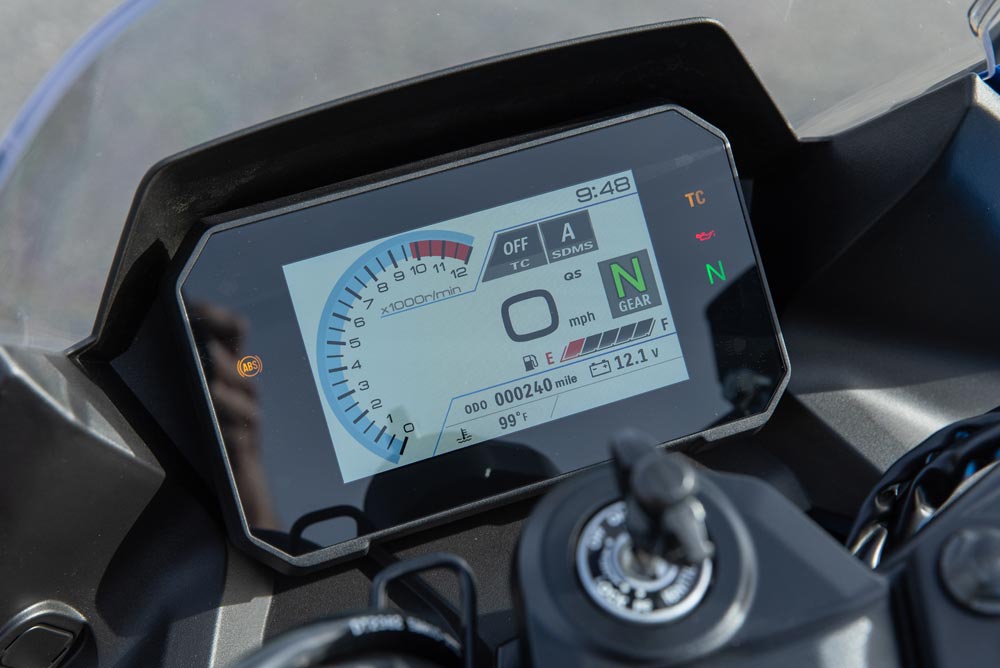 After the terrible dash we got on the GSX-1000 a few years ago, Suzuki has really cleaned up its act with the 5-inch color TFT.
After the terrible dash we got on the GSX-1000 a few years ago, Suzuki has really cleaned up its act with the 5-inch color TFT.
On the track, the motor is a little slow to rev, but there’s still a claimed 83 horsepower on tap, so it’ll go plenty quickly. Perhaps a lightened flywheel would help here, but this mod is against the MotoAmerica Twins Cup rules, so it’s unlikely you’ll see one any time soon. Incidentally, during the homologation for MotoAmerica, Suzuki fitted a Yoshimura exhaust with no mapping or any other changes and hit the 92 horsepower mark straight away, as well as losing a stout 20 pounds. That bodes well for the tuners out there who are aiming to make a little Twins Cup rocket, and I’d be expecting close to 100 horsepower without going overboard on the modifications.
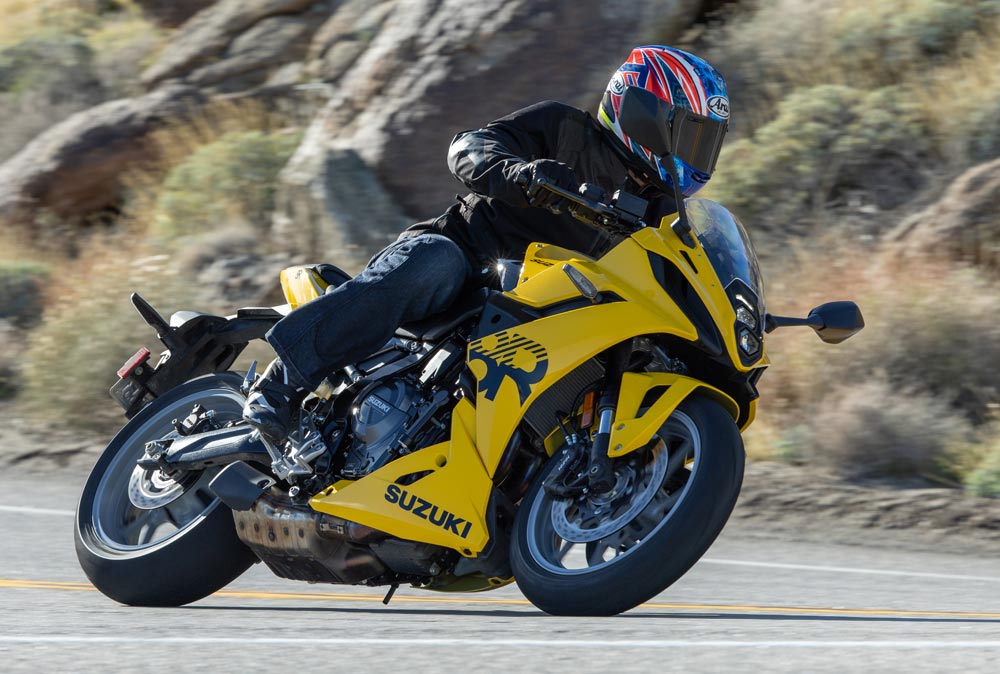 Don’t know about you, but we’re going for the yellow. It gives us some ’90s GSX-R750 vibes.
Don’t know about you, but we’re going for the yellow. It gives us some ’90s GSX-R750 vibes.
Suzuki has created a very good little bike with the GSX-8R. It’s a nicely finished, high-quality piece that should serve its intended purpose very well. The extra weight over some of its competitors might be a hindrance to some, but it’s a solid, well-built motorcycle that I feel will be a bit of a surprise come MotoAmerica 2024. If you don’t care about the racetrack, no matter. The 8R is an excellent street bike, which is about the best compliment I can give it. CN
VIDEO | 2024 Suzuki GSX-8R Review
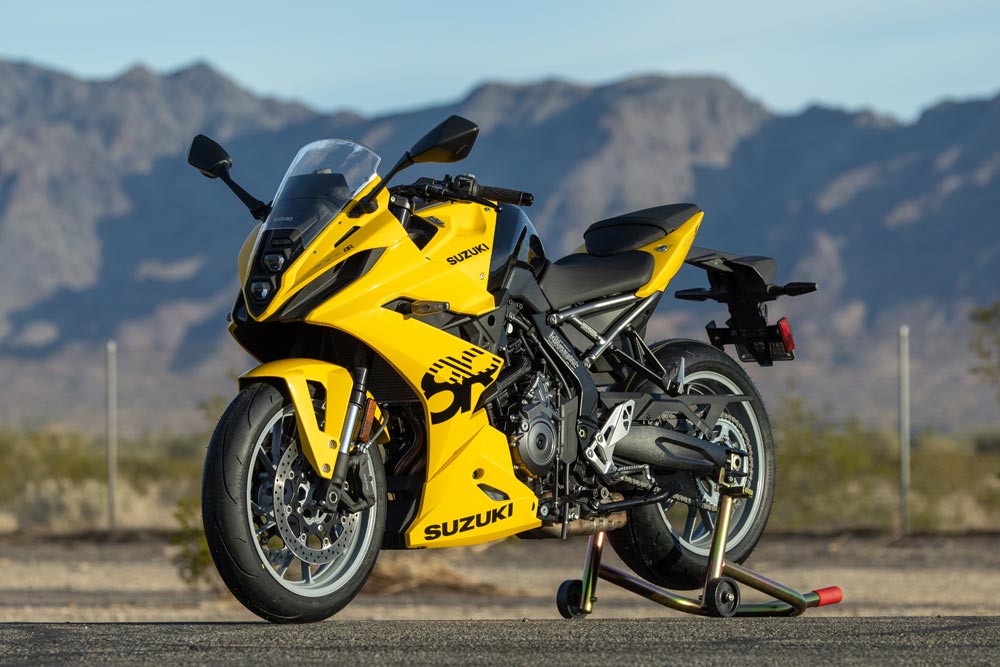
2024 Suzuki GSX-8R Specifications
| MSRP: |
$9439 |
| Engine: |
inline parallel-twin, 4-stroke |
| Valvetrain: |
8-valve, DOHC |
| Cooling system: |
Liquid |
| Displacement: |
776cc |
| Bore x stroke: |
84.0 x 70mm |
| Fuel injection: |
Electronic fuel injection system, 42mm throttle body |
| Compression ratio: |
12.8:1 |
| Exhaust: |
1-Feb |
| Transmission: |
6-speed |
| Clutch: |
Wet, multi-plate, slip and assist |
| Electronics: |
Three Riding Modes, ABS, Traction Control |
| Chassis: |
Tubular steel |
| Front suspension: |
41mm Showa SFF-BP inverted forks, non-adjustable |
| Rear suspension: |
Showa monoshock, adjustable preload |
| Front brake: |
Twin 320mm discs, Nissin 4-piston radial monobloc calipers |
| Rear brake: |
Single 240mm disc, Nissin single-piston caliper |
| Front tire: |
Dunlop Roadsmart 2 120/70ZR17M/C (58W) |
| Rear tire: |
Dunlop Roadsmart 2, 180/55ZR17M/C (73W) |
| Rake: |
25° |
| Trail: |
3.8 in. |
| Wheelbase: |
57.7 in. |
| Seat height: |
31.9 in. |
| Fuel capacity: |
3.7 gal. |
| Weight (Curb, Claimed): |
452 lbs. |
